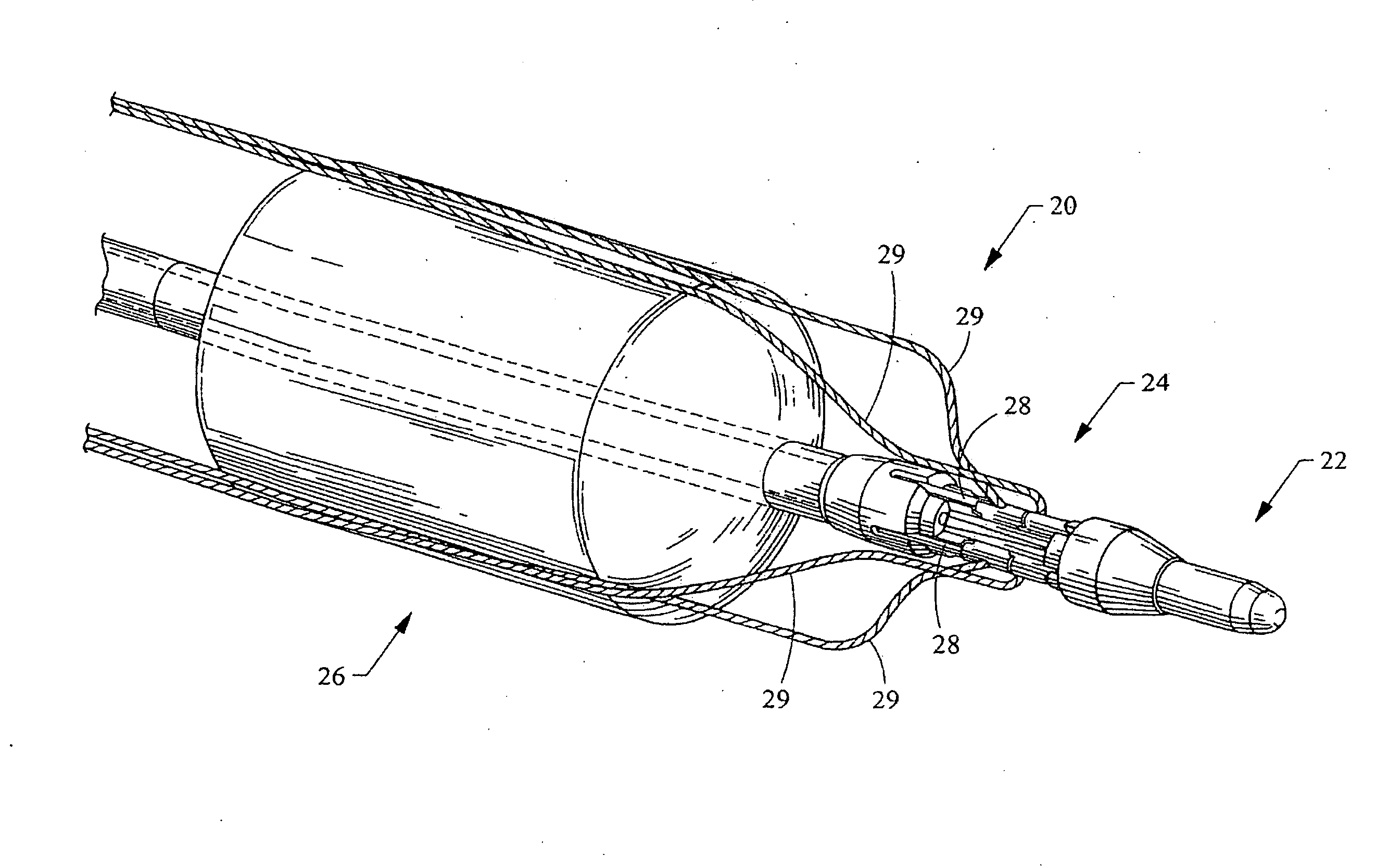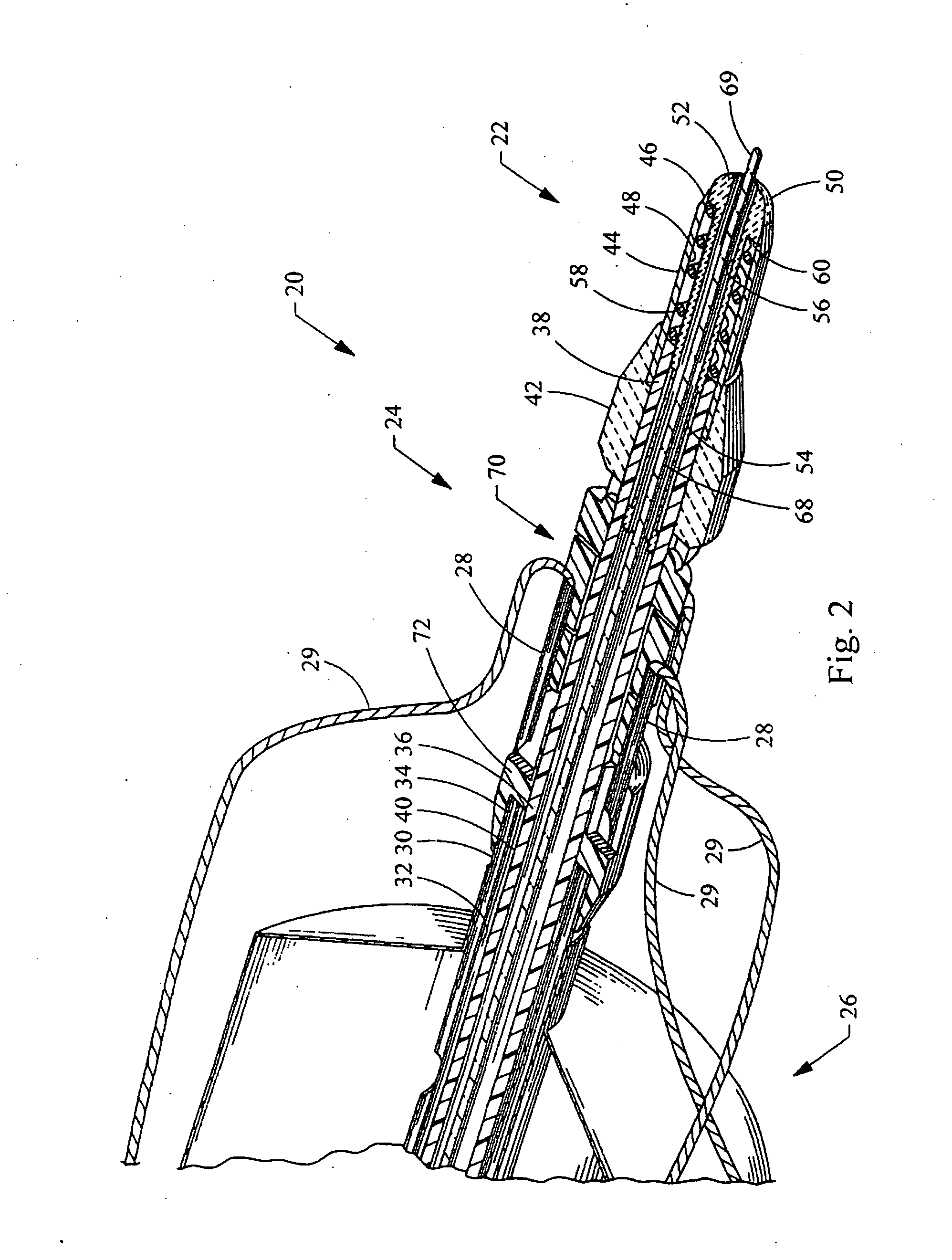Device to open and close a bodily wall
- Summary
- Abstract
- Description
- Claims
- Application Information
AI Technical Summary
Benefits of technology
Problems solved by technology
Method used
Image
Examples
Embodiment Construction
[0019]Turning now to the figures, an elongate medical device 20 for non-invasively opening and closing a visceral wall has been depicted in FIGS. 1-5, and is constructed in accordance with the teachings of the present invention. The medical device 20 generally includes a cutting tool 22, a suturing tool 24, and a dilation tool 26. The cutting tool 22 is used to form a perforation 12 in a visceral wall 10 (FIG. 3). The suturing tool 24 is used to place a plurality of needles 28 through the visceral wall 10, the needles 28 being connected to one or more sutures 29 for closing the perforation 12. The dilation tool 26 is used to dilate the perforation 12.
[0020]As shown in FIG. 2, the elongate medical device 20 is generally defined by a double-walled outer catheter 30 defining a first lumen 32, and an inner cannula 36 defining a second lumen 40. The inner cannula 36 projects beyond a distal end 34 of the outer catheter 30. The distal end 38 of the inner cannula 36 is connected to the cut...
PUM
 Login to View More
Login to View More Abstract
Description
Claims
Application Information
 Login to View More
Login to View More - R&D
- Intellectual Property
- Life Sciences
- Materials
- Tech Scout
- Unparalleled Data Quality
- Higher Quality Content
- 60% Fewer Hallucinations
Browse by: Latest US Patents, China's latest patents, Technical Efficacy Thesaurus, Application Domain, Technology Topic, Popular Technical Reports.
© 2025 PatSnap. All rights reserved.Legal|Privacy policy|Modern Slavery Act Transparency Statement|Sitemap|About US| Contact US: help@patsnap.com



